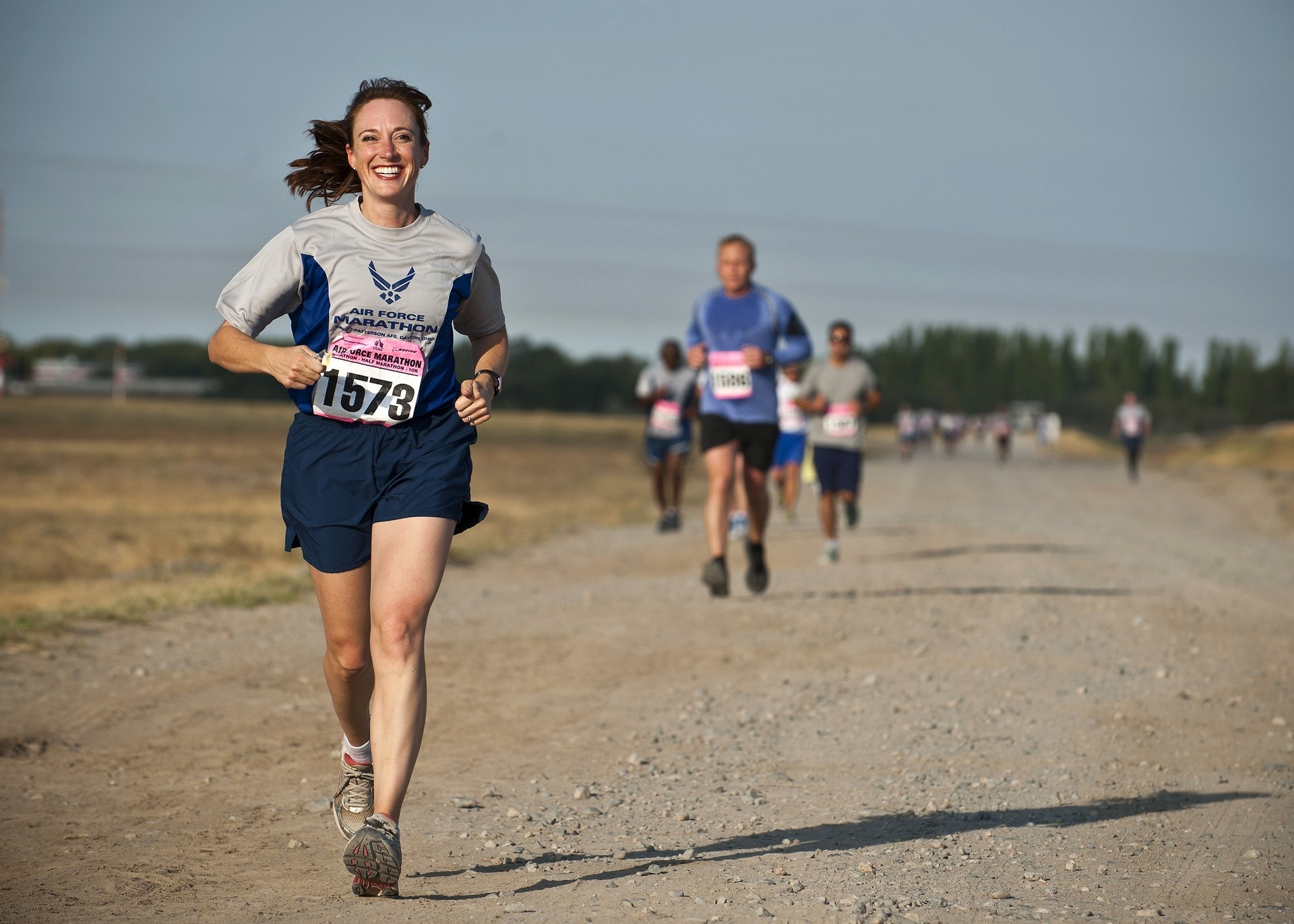A Sport Med Doc’s Top 5 Injury Prevention Tips for Runners
Banff Sport Medicine Physician and ultramarathon running M.D., Dr. Andy Reed, discusses his Top 5 injury prevention tips (originally published on UltrAspire’s Facebook page).

TIP #1: GET MORE SLEEP!!
Sleep really is the ultimate performance enhancer, yet it’s one that is often neglected.
When training hard, we all benefit from more sleep, yet studies show that even elite athletes tend to lack the requisite number of hours in bed.
A great simple little formula to remember is WORK + REST = GROWTH.
Most of us are great at putting in hard efforts on the road or trail; we can motivate ourselves to push hard on that last interval, but how many of us really prioritize sleep?
It’s ironic, because the gains from all that hard work are really only realized with adequate rest. When we sleep well, we optimize the release of important rebuilding hormones. Testosterone and Growth hormone are particularly important, and peak when we sleep, allowing our damaged muscles to recover and adapt to training stresses.
When we are sleep deprived, not only do we hamper recovery and fail to realize these gains, but we now know that chronic sleep deprivation causes a multitude of health problems; sleep-deprived athletes suffer more infections, more injuries and are more prone to overtraining syndrome. If you have problems with chronic injuries, poor sleep may be part of the issue.
Fortunately the short term sleep disruption that many of us experience the night before a race, due to nerves or an early start, doesn’t seem to hamper race-day performance, so don’t worry too much about an occasional restless night before your marathon.
TIP #2: GET STRONG!
Most runners I know despise the gym. Who wouldn’t rather be cruising on some mountain ridge or twisty single track than sweating it out on the squat rack?
If you’re looking for some longevity in your running career, however, and looking to do everything you can to avoid injury, then you may need to reconsider. The good news is that it doesn’t take much!
30 – 40 minutes of lifting twice a week is all it takes for most runners to build the necessary strength to significantly reduce the risk of a running related injury.

In the past, light weights were king – lots of repetitions and light weights build endurance without adding bulk, right? Wrong! If you run a lot you’ve already got the endurance part covered. To build strength and injury-proof yourself, heavy weights reign.
I recommend heavy lifting that targets multiple large muscle groups. Runners should focus on deadlifts and squats, with all their variations. Aim to perform 3-5 sets of 3-5 reps. How heavy? A good rule of thumb I use is that you should have 1 or 2 lifts left in the tank at the end of each set. These are challenging but the strength gains occur rapidly. I also like bench presses, pull-ups and the farmers carry.
Runners are often worried about getting ‘big’ but I can tell you it takes a lot more than this to develop big muscles!
Why are these heavy lifts so effective? Think of it like this – lots of individual muscle fibres are essentially ‘asleep’ when we run. Our neurological system doesn’t know how to wake them, hence they go unused. These challenging heavy lifts demand all your muscle fibres wake up, and once they’ve been activated, we can more easily tap into them. Without lifting you have this large, untapped potential in your muscles.
Strong muscles and tendons means less risk of overload, faster recovery from training sessions, improved performance and less risk of injury. Its really all good!
TIP #3: SLOW DOWN!

This one may seem somewhat obvious, but it’s actually harder to put into practice than you might think. I see this all the time on Strava (which in my opinion is a big part of the problem!) Most of us do most of our training at an intensity that isn’t either (a) easy enough to allow for full recovery before the next run, and (b) hard enough to produce the physiological adaptations we are looking for.
If you want to be a stronger runner and avoid injury most runs should be easy, almost too easy. Conversation should be easy. Walk the hills if you have to and run with your slower friends! Workouts, however, should be tough! A sprinkle of intensity on a base of easy running has been shown to be very effective and in my opinion not only leads to greater fitness gains but reduces the risk of injury, because you actually go into tougher workouts in a state of recovery!
Stephen Seiler coined the term polarized training.
80% of workouts should be in the easy aerobic zone; 20% should be at threshold or above. Think of threshold as the point at which breathing becomes labored and completing sentences is difficult.
Of course there are nuances, but the average runner can do a lot worse than to slow down most of their runs. Those easy runs promote good relaxed running form, and under the hood all kinds of marvelous adaptations take place such as improved fat oxidation, improved mitochondrial function and more!
Remember to take at least one complete rest day per week too. Rest days should be just that, too – rest! Don’t lift weights, ride your bike or cross train on these days; that ain’t rest!
TIP #4: EAT ENOUGH TO FUEL YOUR ADVENTURES
Running is tough, and tough events demand adequate fueling not only to power you through your training or racing, but also to maximize recovery and ensure that you optimize all of your other physiological processes. In general, the more you train, the more fuel you need!

I’m not going to delve into the relative merits of high carb vs low carb, high fat vs low fat, suffice to say that your diet must support your training and physiology! Under-fueling isn’t always obvious at first, and in fact many under-fueled athletes initially see a temporary bump in their performance, as there is often a corresponding drop in body weight, but it soon catches up to you.
— Learn more about nutritional strategies in our upcoming webinar!! —
Nagging injuries or illness are a common feature. Our immune system suffers, and frequent infections ensue. Sleep quality will suffer, mood will deteriorate or fluctuate, and ultimately performance will start to falter.
Females may experience menstrual irregularities. Some athletes experience abdominal discomfort and bloating, and these symptoms can lead them to believe they have food allergies, which is rarely the case, but may lead to an even more restrictive diet.
If you’ve ever experienced a stress fracture, this may be an indicator that your diet is not up to par. If you’re training hard and under fuelled, muscle and bone health are sacrificed, and these structures become much more likely to fail under all the stress of running. Hormonal disruption, often associated with menstrual irregularities in females, compounds the problem, causing a decrease in bone mineral density and the subsequent increase in risk for a fracture.
The best advice I can give is to eat regularly, choosing nutrient dense and minimally processed foods as much as possible. Try not to restrict any specific food groups. Eat before and after your workouts. Consume carbohydrates to match the intensity of your workout, and get some high quality protein in after hard efforts to bump start your recovery. Adequate post run carbohydrate consumption will replenish your glycogen stores for the next effort! And don’t shy away from fat either. Normal hormonal and immune function depends on adequate fat consumption!
TIP #5: RESPECT THE REST AFTER RACING
All too often, no sooner have we finished our goal race or event then we are looking to get signed up for the next one.

Our thinking often goes like this:
“The race went well, I ran really fast, let’s capitalize on this fitness and get into another race ASAP!”
Alternatively:
“Well that sucked, I did not perform to my ability, let’s look for redemption!”
It’s a shame because instead of celebrating our success, or the months of training that got us to the start line, we immediately move on, looking for something bigger and better. Jumping immediately back into hard training increases the risk of injury and burnout. Training is stressful, and racing is even more stressful. I believe it’s really important to respect this, and to take some time to recharge the batteries, allow your sore joints and muscles to rebuild, and to enjoy your achievements before moving on! The rest will do you immense good, both psychologically and physically.
I use a rule of thumb that has served me well over the years: for every 10 miles raced, you will need, at the very least, one complete day of rest. This is the absolute minimum, and for many runners, especially novices, more will be needed. I remember my first 50km trail race, I could barely walk for 2 weeks! Now, with more experience and miles under the belt, 3 or 4 days will see me raring to go. Pay extra attention after a race to good nutrition, hydration and sleep, and when you’re feeling ready to go, give it an extra day.
I hope everyone has a great summer of injury-free running!
Expert Contributor

Dr. Andy Reed, Banff Sport Medicine Physician and ultramarathon running M.D.!







